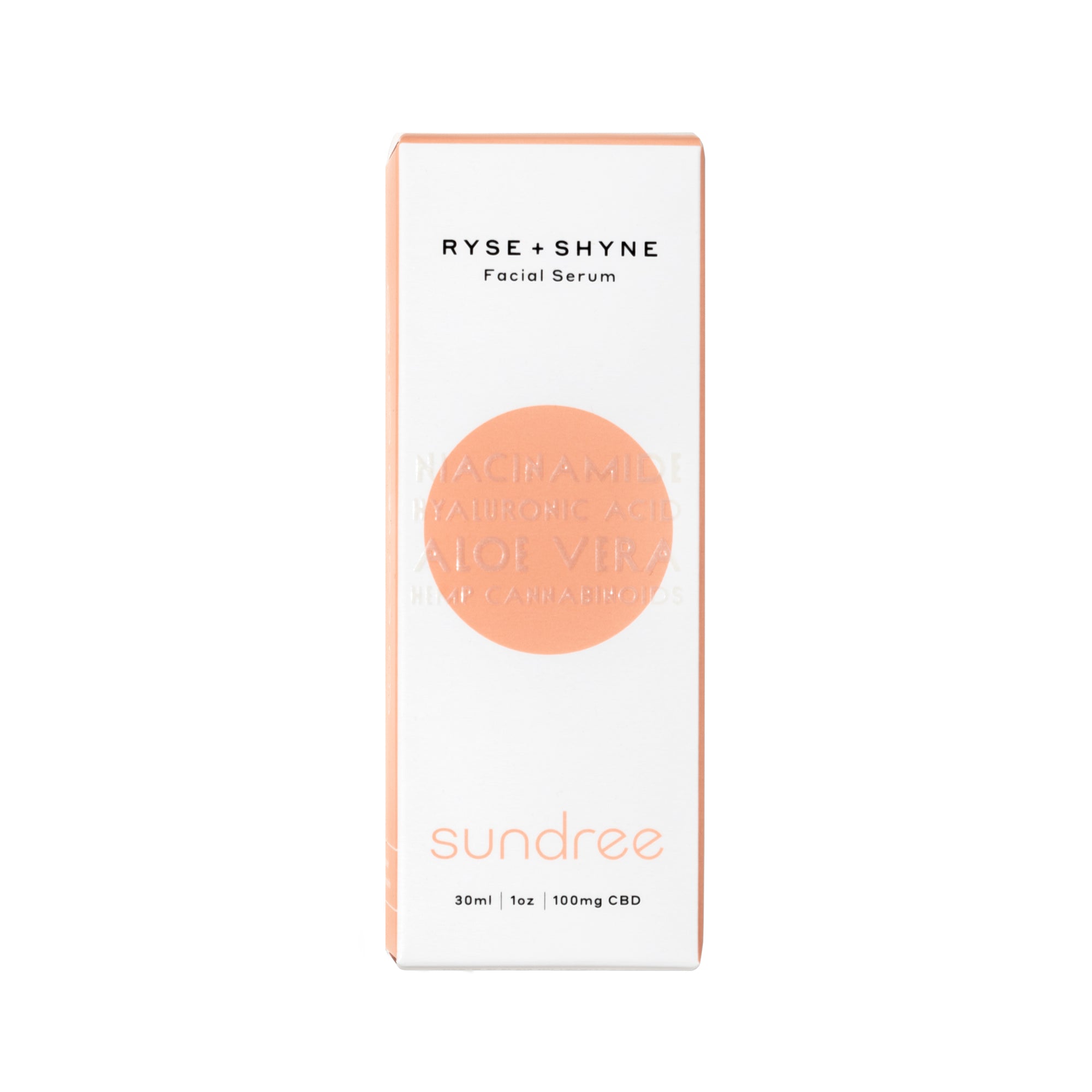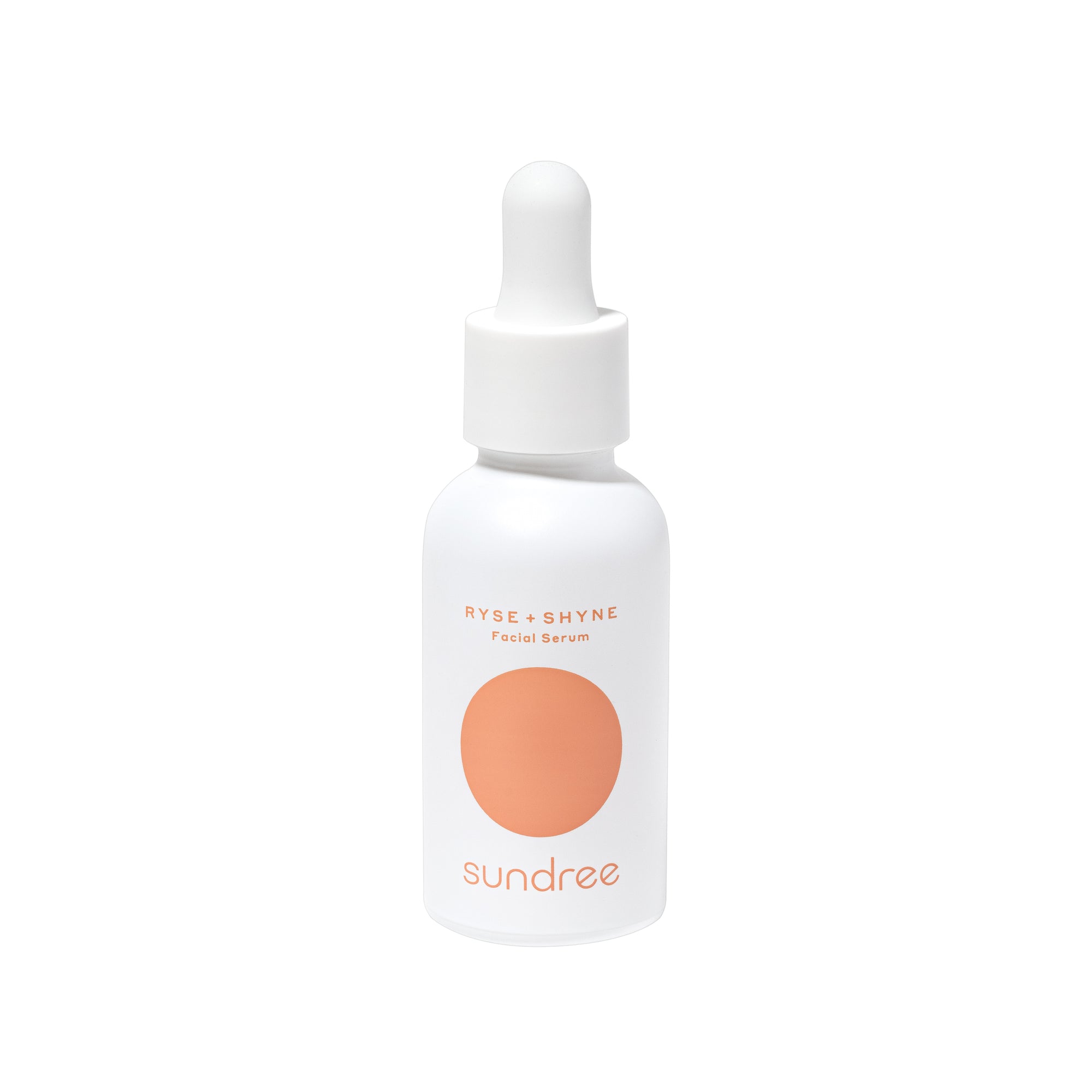There were times when a comprehensive skincare routine involved using a cleanser, exfoliator, and moisturizer. It was a simple, easy, and cost-effective approach to looking after your skin. However, these steps were not enough for treating and preventing various skin issues due to certain harmful internal and external agents. As a result, facial serums emerged in the skincare world and gained popularity due to their fast and deep acting properties. Serums are formulated with plenty of active ingredients that penetrate deeper into the skin and deliver essential nutrients to the cells.
Despite the never-ending hype and excellent outcomes, there are still many questions about how to use facial serums to get optimal benefits. So stay tuned to learn more!
What is a Facial Serum?
A face serum is a product that comes with a consistency that falls between a liquid and a gel. It’s usually a lightweight, fast-absorbing, non-greasy product that quickly seeps into the skin's surface, addressing different skin problems. Facial serums are formulated to target and treat specific skin issues, such as fine lines, hyperpigmentation, wrinkles, acne, and dryness.¹ Since facial serums are not too thick or heavy; they are deemed suitable for all skin types, including oily and acne-prone skin.
Do You Need to Use a Facial Serum?
Many of us may think of adding a facial serum to our skincare regimen merely as an additional expenditure or one more step to follow every day. Some may even believe that they don’t need to apply a facial serum because they are already using a moisturizer. However, the fact is that facial serums are worth investing in. As far as the question of using a facial serum and a moisturizer goes, moisturizers have thicker and heavier consistency and are aimed at hydrating and moisturizing the skin during the day. Facial serums are designed to tackle specific skin concerns on a deeper level. Therefore, facial serum and moisturizer have different purposes, and you should apply both.
Benefits of Using a Facial Serum
Facial serums are super-nourishing skincare products that come with many benefits for the skin, helping people with different skin problems. Here are a few ways a facial serum can improve your skin:
- Improve the Skin’s Firmness - We have good news, if you are stressed about fine lines and wrinkles becoming prominent on your face with every passing day. A facial serum is one of the most efficient and fast ways of delivering anti-aging ingredients into the skin cells, helping to repair and renew them. As a result, you’ll notice a visibly firmer, smoother, and even-textured complexion.
- Accelerate Cell Turnover - Exfoliation is an essential component of a healthy and thorough skincare regimen. Serums can help you get rid of the dead, dull layer of skin. You can find various facial serums with exfoliating ingredients that speed up the cell turnover rate, helping to replace old cells with newer, healthier cells.² These formulas are particularly useful for sensitive and dry skin that gets aggravated with harsh exfoliating products.
- Soothe Inflammation - Facial serums can help relieve inflamed, itchy, and reddened skin by delivering soothing and repairing compounds deep into the skin without irritating the skin. Various brands manufacture facial serums containing non-irritating and calming ingredients, making them suitable for even those with inflammatory skin issues, including eczema, acne, and psoriasis.
- Brighten the Skin - If your skin tends to become dull and weary due to exposure to harmful external elements or an inadequate supply of essential nutrients via skincare products, facial serums are there to help. Facial serums are packed with refreshing and revitalizing compounds that can instantly restore the skin’s radiance and bring it back to life.
- Treat Hyperpigmentation - A number of factors can damage the skin and lead to the development of age spots, melasma, post-inflammatory hyperpigmentation, and other forms of uneven skin tone. You can select from a wide range of facial serums comprising of active ingredients that repair and regenerate damaged skin cells, giving the skin an even-toned and brighter appearance.
Choose a Facial Serum According to Your Skin Type
One of the major things to consider while buying a facial serum is your skin type. You’ll come across an unlimited range of face serums with varying formulas and ingredients. Look for one with ingredients that work for your particular skin type. Leading with the ingredients is the best option to make sure you opt for the right kind of formula for your facial serum. If you’re battling oily and acne-prone skin, hunt for a formula that contains anti-acne and sebum-regulating ingredients, such as retinol, salicylic acid, and glycolic acid. Similarly, collagen-boosting and antioxidant-rich ingredients like green tea and vitamin C work the best for aging skin. Finally, look for a face serum composed of humectant and soothing compounds for dry and dehydrated skin, such as hyaluronic acid and niacinamide.
A serum we love using is Sundree’s RYSE+SHYNE hydrating facial serum. Great for all skin types, this lightweight serum is packed with beauty-boosting ingredients, hyaluronic acid, niacinamide, aloe, and a hint of CBD to help hydrate the skin while improving the skin’s texture. Apply few drops to damp skin then watch it soak in beautifully to leave you with a lit-from-within glow.
Ingredients to Look for in a Serum
The ingredients you choose should be effective in helping you achieve your specific skin goals, according to your skin concerns and skin condition. Here are a few ingredients to scan for on the ingredient list of a facial serum:
- Hyaluronic Acid
- Niacinamide
- Peptides
- Vitamin E
- Retinol
- Vitamin C
- Ceramides
- AHAs
- BHAs
How to Apply a Facial Serum?
No matter how good the formula of your facial serum is and how much money you have spent on it, if you don’t apply it correctly, it may not yield the desired results. So to ensure that you receive the most from your facial serum, let’s help you through the right way of applying your facial serum. Here are a few tips to remember:
- Cleanse Your Skin- The first step to maximizing the effects of your facial serum is to start with a well-cleansed skin. Otherwise, the buildup of grime, sebum, and dirt on the skin's surface won’t allow the serum to absorb into the skin. Use lukewarm/tepid water instead of hot or cold water. You can also exfoliate your skin before applying serum.³
- Apply to Damp Skin - Using your facial serum on moist skin can enhance its effectiveness to a great extent because damp skin is a lot more permeable or receptive than dry skin.
- Less is More - Unlike other skincare products, formulas of facial serums are highly concentrated, and you only need to apply a few drops of the product. A pea-sized amount of facial serum is enough to cover your entire face.
- Gently Apply Your Serum - Now that your skin is cleansed and damp, take out 3-4 drops of your facial serum onto your palm and spread it between your palms. Gently press the serum into your skin without rubbing or tugging the skin to avoid irritating the skin.
- Wait for a Few Minutes - Once you are done with pressing facial serum into your skin, wait for a few minutes to let the serum absorb into the skin before following other steps of your skincare routine. Apply your regular moisturizer after the serum is fully absorbed.
- Apply Products in Correct Order - It’s essential to follow the thinner consistency to thicker consistency rule of skincare products to allow each product to do its job. So, after cleansing and exfoliating the skin, apply your facial serum and follow the usual order of using your products, i.e., moisturizer and sunscreen.
When to Apply a Facial Serum?
Generally, face serums can be used twice a day. Therefore, you can incorporate it into your morning and bedtime skincare routine. However, if the formula contains exfoliating ingredients, like retinol and salicylic acid, it can make your skin sensitive to the sun, and using them during the daytime can cause irritation, dryness, and redness. It’s recommended to use such formulas at night to avoid any adverse effects. On the other hand, face serums comprising of antioxidants should be used in the morning to shield the skin against oxidative damage throughout the day. Also, use your hydrating serums during the day and at night to replenish and preserve the skin’s moisture level.
In Conclusion...
Face serums are the wonders of the skincare world, packed with high concentrations of active ingredients that instantly and deeply absorb into the skin, performing their skin-savvy actions on a cellular level. You can pick from a never-ending variety of face serums available in the market, each carrying different ingredients and unique properties. From soothing and hydrating serums to brightening and anti-aging serums, you can find a formula to help you achieve your skin goals. Besides choosing the right formula with suitable ingredients for your individual skin type and concerns, it’s equally significant to use it properly to reap maximum benefit from it.
Citations:
- Brooklyn. (2022). ‘The Difference Between Dry and Dehydrated Skin,’ Sundree, Accessed May 24, 2022. Available at: https://sundree.com/blogs/news/the-difference-between-dry-skin-and-dehydrated-skin
- Rivas, Genesis. (2021). ‘Dermatologists Explain Why Cellular Turnover Is Key for Healthy, Youthful Skin’, Real Simple, Accessed May 24, 2022. Available at: https://www.realsimple.com/beauty-fashion/skincare/cellular-turnover
- Santos-Longhurst. (2018). ‘What Does It Mean to Exfoliate? Why You Should and How to Start’, Healthline, Accessed May 28, 2022. Available at: https://www.healthline.com/health/beauty-skin-care/meaning-of-exfoliating#:~:text=Exfoliating%20is%20the%20process%20of,cells%20don't%20shed%20completely.















